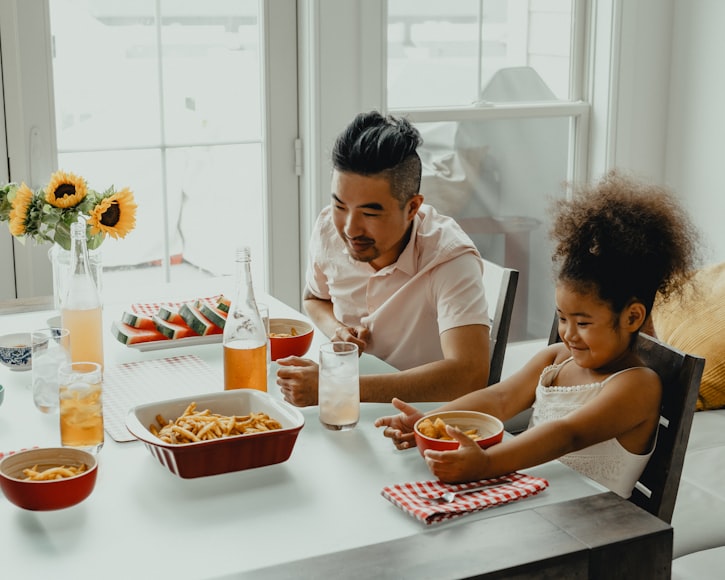How to Calm an Aggressive Dog Outline:

Introduction
Aggressive behavior in dogs can be a challenging and potentially dangerous issue. Understanding the causes and effectively addressing them is crucial for the safety and well-being of both the dog and those around them. This article provides a comprehensive guide to calming an aggressive dog, offering practical strategies and insights into the underlying causes.
Understanding Aggression
Before attempting to calm an aggressive dog, it’s essential to understand the different types of aggression they may exhibit:
- Protective aggression: Dogs may exhibit this when they feel the need to protect themselves, their owners, or their territory.
- Fear-based aggression: Triggered by fear or anxiety, dogs may become aggressive as a defense mechanism.
- Predatory aggression: Instinctive behavior seen in certain breeds towards smaller animals, such as cats or squirrels.
- Dominance aggression: A power struggle between dogs or between a dog and a human.
- Pain-induced aggression: Caused by underlying pain or discomfort.
Calming Techniques
Once the cause of aggression is identified, appropriate calming techniques can be applied:
- Stay calm: Avoid panicking or reacting aggressively, which can escalate the situation.
- Establish a safe space: Provide the dog with a quiet, secure area where they can retreat to.
- Remove triggers: Identify and eliminate potential triggers that provoke the aggressive behavior.
- Avoid punishment: Physical punishment or confrontational methods will only reinforce aggression and make the situation worse.
- Body language: Use soothing gestures and avoid direct eye contact, which can be interpreted as threatening.
- Positive reinforcement: Reward calm and appropriate behavior to encourage desired responses.
- Distraction: Redirect the dog’s attention to something enjoyable, such as a toy or treat.
- Exercise: Providing adequate exercise can help reduce stress and pent-up energy.
- Medication: In severe cases, medication may be prescribed to regulate the dog’s behavior.
Training and Behavioral Modification
Long-term behavioral modification is crucial for addressing the underlying causes of aggression. This may involve:
- Obedience training: Establishing basic commands and obedience helps the dog feel more secure and in control.
- Desensitization: Gradually exposing the dog to triggers in a controlled environment and teaching them to remain calm.
- Socialization: Providing opportunities for the dog to interact with other dogs and humans in a positive manner.
- Play therapy: Engaging the dog in supervised play sessions can help build confidence and redirect aggression.
- Professional help: Seeking assistance from a qualified veterinarian or animal behaviorist is recommended for severe or persistent aggression.
Additional Tips
- Be patient and consistent with calming techniques and training.
- Avoid situations that trigger aggression until the dog is under control.
- Inform others about the dog’s behavior and ensure they approach it with caution.
- Use a muzzle when necessary to prevent harm during training or interaction with others.
- Seek professional guidance if the aggression persists or escalates.
Conclusion
Calming an aggressive dog requires understanding the underlying causes, implementing appropriate calming techniques, and engaging in long-term behavioral modification. By following these strategies, you can help your dog overcome aggression and create a safe and harmonious environment for all. Remember, patience, consistency, and seeking professional assistance when necessary are essential for success.
Identify the Triggers:

As dog pet bloggers, it’s crucial to provide valuable information and guidance to our readers, including addressing challenging behaviors like dog aggression. This article will delve into the topic of calming an aggressive dog, offering insights and practical strategies to help owners manage and mitigate this behavior.
Understanding Dog Aggression
Aggression in dogs is a complex behavior that can be triggered by various factors. Identifying the underlying cause is pivotal in developing an effective calming strategy. Common triggers include:
- Fear or anxiety
- Pain or discomfort
- Perceived threat to territory, resources, or family
- Inappropriate socialization or training
Identifying the Triggers
The first step in calming an aggressive dog is to determine what situations or stimuli trigger the behavior. Owners can observe their dog’s reactions in different settings, noting the triggers that evoke aggression. Some common triggers include:
- Strangers approaching
- Dogs or other animals
- Crowds or loud noises
- Touching or handling specific body parts
- Certain objects or locations
Calming Strategies
Once the triggers are identified, owners can implement strategies to calm their aggressive dog:
1. Medical Examination: Rule out any underlying medical conditions that may be contributing to the aggression. Consult a veterinarian for a thorough examination and treatment plan if necessary.
2. Controlled Exposure: Gradually expose the dog to the triggers in a controlled environment. Start with a low intensity trigger and gradually increase the intensity while rewarding the dog for calm behavior.
3. Desensitization: Pair the triggers with positive experiences. For example, if a dog is aggressive towards strangers, have friends and family approach the dog while giving it treats or praise.
4. Counter-Conditioning: Change the dog’s emotional response to the triggers. By repeatedly pairing the triggers with positive experiences, the dog will gradually associate the triggers with something pleasant rather than something that provokes aggression.
5. Obedience Training: Teach the dog basic obedience commands such as sit, stay, and come. This establishes a bond and control, making it easier to manage the dog’s behavior in challenging situations.
6. Socialization: If the aggression is rooted in a lack of socialization, introduce the dog to other dogs and people in a safe and controlled environment. Gradually increase the duration and intensity of interactions while rewarding the dog for positive behavior.
7. Management: Implement management techniques to prevent the dog from experiencing the triggers that evoke aggression. This may involve using leashes, muzzle, or crate training to control the dog’s access to certain areas or situations.
8. Professional Help: If the aggression is severe or persistent, consider seeking professional help from a certified animal behaviorist or veterinarian. They can provide personalized guidance and therapy to address the underlying causes and develop a tailored calming plan.
Patience and Consistency
Calming an aggressive dog requires patience and consistency. It’s essential to work with the dog gradually and provide positive reinforcement. Avoid punishing the dog for aggression, as this will only worsen the behavior. With time, effort, and a multi-faceted approach, it’s possible to reduce the dog’s aggression and improve their overall well-being.
By sharing this comprehensive information on calming aggressive dogs, pet bloggers can empower their readers with the knowledge and strategies they need to address and manage this challenging behavior.
Create a Safe Environment:

Aggressive behavior in dogs can be a distressing and potentially dangerous issue. As a responsible dog owner, it’s crucial to understand the root causes of aggression and implement effective strategies to address it. This article will provide a comprehensive guide on how to calm an aggressive dog, creating a harmonious and safe environment for both you and your canine companion.
Understanding the Types of Aggression
Before attempting to calm an aggressive dog, it’s essential to identify the underlying type of aggression. Common types include:
- Territorial aggression: Driven by the dog’s desire to protect its territory, such as its home or food bowl.
- Fear aggression: Occurs when a dog feels threatened and reacts defensively.
- Predatory aggression: Typically seen towards smaller animals, driven by the dog’s hunting instinct.
- Dominance aggression: Arises from the dog’s need to establish dominance over other dogs or humans.
- Pain-induced aggression: Aggression triggered by physical pain or discomfort.
Creating a Safe Environment
Once the type of aggression has been identified, it’s imperative to provide a calm and safe area for the dog where they feel protected. This could be a quiet room with dim lighting and familiar bedding, or even a crate or playpen.
- Remove potential triggers: Identify and remove any objects or situations that trigger aggression, such as other animals, unfamiliar people, or loud noises.
- Provide plenty of space: Limit the dog’s access to areas where they might feel cornered or threatened.
- Avoid direct eye contact: Intimidating behaviors, such as direct eye contact, can exacerbate aggression.
Behavioral Techniques
In conjunction with creating a safe environment, several behavioral techniques can be employed to calm an aggressive dog:
- Positive reinforcement: Reward the dog for calm and non-aggressive behaviors, using treats or praise.
- Counter-conditioning: Gra gradually expose the dog to the triggers that evoke aggression while providing positive reinforcement. This helps the dog associate the triggers with something positive.
- Desensitization: Slowly reduce the intensity or duration of the triggers while the dog is in a calm state. This helps them tolerate and accept the triggers without aggression.
- Redirection: When a dog exhibits aggressive behavior, redirect their attention to an alternative activity, such as playing with a toy or engaging in a training session.
- Ignoring: In certain situations, ignoring the dog’s aggressive behavior can discourage it and allow them to calm down.
Medical Considerations
In some cases, aggression in dogs may be caused by underlying medical conditions, such as pain, hormonal imbalances, or neurological disorders. It’s essential to consult a veterinarian to rule out any potential medical causes and receive appropriate treatment.
Additional Tips
- Stay calm and avoid punishment: Punishing an aggressive dog will only worsen the behavior and damage the trust between you and your pet.
- Consider professional help: If you’re unable to control your dog’s aggression on your own, don’t hesitate to seek professional help from a certified dog trainer or veterinary behaviorist.
- Be patient and consistent: Calming an aggressive dog requires patience, consistency, and a lot of positive reinforcement. Don’t give up if you don’t see immediate results.
- Maintain open communication: Communicate with other family members or those who interact with your dog to ensure everyone is aware of the dog’s aggression and how to respond appropriately.
Conclusion
Calming an aggressive dog is a challenging but achievable task. By understanding the underlying causes of aggression, providing a safe environment, employing behavioral techniques, and seeking professional help when necessary, you can create a harmonious and fulfilling relationship with your canine companion. Remember, patience, consistency, and a commitment to positive reinforcement are key to rehabilitating an aggressive dog and ensuring a peaceful and happy coexistence.
Use Positive Reinforcement:

Dog aggression is a common problem that can occur in any breed, regardless of size or age. While it can be a challenging issue to address, it is important to remember that aggression is not a natural behavior for dogs and that with patience and consistency, most dogs can learn to control their aggressive impulses.
Understanding Dog Aggression
Before attempting to calm an aggressive dog, it is essential to understand the root cause of the aggression. Common triggers include fear, anxiety, resource guarding, territorial instincts, and pain. Identifying the trigger will help you develop an effective plan for addressing the aggression.
Calming Techniques for Aggressive Dogs
Once you have identified the trigger, you can begin implementing calming techniques to help your dog overcome their aggression. Here are some proven methods:
-
Positive Reinforcement: Reward the dog for calm and non-aggressive behavior. This can include treats, praise, or playtime. The key is to associate positive experiences with non-aggressive behaviors.
-
Desensitization and Counter-Conditioning: Gradually expose your dog to the trigger in a controlled environment while providing positive reinforcement. Over time, the dog will learn to associate the trigger with something positive and the aggression will subside.
-
Redirection: When your dog starts to exhibit aggressive behavior, redirect their attention to something else, such as a toy or a treat. This will help break the cycle of aggression and provide an outlet for their pent-up energy.
-
Time-Outs: If your dog cannot be redirected, consider placing them in a time-out area for a short period. This will give them time to calm down and regain control.
-
Exercise and Mental Stimulation: Provide your dog with plenty of exercise and mental stimulation to reduce boredom and pent-up energy, which can contribute to aggression.
-
Medication: In some cases, medication may be necessary to help control aggression. However, medication should only be used in conjunction with behavior modification techniques.
Additional Tips for Calming Aggressive Dogs
-
Stay Calm: It is important to remain calm and controlled when dealing with an aggressive dog. If you get angry or anxious, the dog will pick up on your energy and become more agitated.
-
Set Boundaries: Establish clear boundaries and enforce them consistently. Let your dog know what behaviors are unacceptable and provide consequences for aggression.
-
Socialization: Socializing your dog from a young age can help prevent aggression towards other people and animals.
-
Seek Professional Help: If you are unable to manage your dog’s aggression on your own, do not hesitate to seek professional help from a qualified dog trainer or veterinarian.
Conclusion
Calming an aggressive dog requires patience, consistency, and a deep understanding of the underlying causes of the aggression. By implementing the techniques outlined in this article and seeking professional help when necessary, you can help your dog overcome their aggressive tendencies and live a happy and well-adjusted life.
Avoid Punishment:

Every dog owner’s heart sinks when they witness their beloved companion exhibiting aggressive behavior. Whether it’s towards strangers, other animals, or even family members, aggression can be a perplexing and frightening experience. However, understanding the underlying causes and employing effective techniques can help you calm your dog and restore harmony in your home.
Understanding the Causes of Aggression in Dogs
To effectively address aggression, it’s crucial to understand its potential triggers. Common causes include:
- Fear or anxiety
- Territorial instinct
- Resource guarding (food, toys, etc.)
- Redirected aggression
- Pain or medical conditions
Calming Techniques for Aggressive Dogs
1. Identify and Address Triggers:
- Observe your dog closely to pinpoint the situations or stimuli that trigger their aggression.
- Once you’ve identified the triggers, avoid them as much as possible.
2. Avoid Punishment:
- Physical punishment will only worsen aggression and damage your bond with the dog.
- Instead, focus on positive reinforcement and rewarding calm behavior.
3. Create a Safe Space:
- Provide your dog with a quiet and safe space where they can retreat if feeling overwhelmed.
- This could be a crate, a bed under a table, or a designated spot in the house.
4. Practice Controlled Socialization:
- Gradually expose your dog to unfamiliar people and animals in a controlled and positive way.
- Start with brief interactions and gradually increase the duration and intensity as your dog becomes more comfortable.
5. Desensitization and Counter-Conditioning:
- This technique involves gradually exposing your dog to the trigger while rewarding them for remaining calm.
- Over time, your dog will associate the trigger with positive experiences and become less reactive.
6. Veterinary Consultation:
- If your dog’s aggression is severe or persistent, consult a veterinarian.
- Underlying medical conditions, such as pain or imbalances, can contribute to aggressive behavior.
7. Professional Training:
- Dog training professionals can provide expert guidance and techniques to manage aggression.
- They will help you develop a personalized training plan based on your dog’s specific needs.
Additional Tips for Calming an Aggressive Dog
- Stay Calm: When your dog is aggressive, it’s essential to remain calm and avoid escalating the situation.
- Use Nonverbal Cues: Avoid staring at your dog or approaching them directly. Instead, approach calmly with your body slightly turned away.
- Provide Ample Exercise: Regular exercise can help reduce anxiety and pent-up energy, which can contribute to aggression.
- Patience and Consistency: Changing aggressive behavior takes time and consistency. Be patient with your dog and continue to practice the calming techniques described above.
Remember, aggression in dogs is not a sign of malice or misbehavior. It’s a response to underlying triggers that can be addressed with understanding and effective intervention. By implementing these techniques, you can help your dog overcome aggressive tendencies and enjoy a happy and fulfilling life as a beloved family member.
Seek Professional Help:
Aggressive behavior in dogs can be a concerning and distressing issue for pet owners. While it’s important to address the underlying causes with professional help, there are immediate steps you can take to calm an aggressive dog and prevent further incidents.
1. Identify Triggers and Avoid Them:
The first step towards calming an aggressive dog is to identify the triggers that provoke their outbursts. Common triggers include fear, pain, resource guarding, and territoriality. By understanding what sets your dog off, you can avoid or minimize these situations.
2. Maintain Distance and Observe:
When your dog exhibits aggressive behavior, it’s essential to create distance and maintain a calm demeanor. Do not approach or directly confront the dog. Instead, calmly retreat to a safe location and observe their behavior from afar.
3. Use Positive Reinforcement:
Rewarding your dog for calm and non-aggressive behavior can help reinforce positive interactions and reduce their anxiety levels. When your dog remains calm around potential triggers, provide treats, praise, or attention as rewards.
4. Provide Exercise and Mental Stimulation:
Sufficient exercise and mental stimulation can help reduce boredom and pent-up energy, which can contribute to aggressive behavior. Engage your dog in daily walks, playtime, and puzzle-solving activities to keep them physically and mentally active.
5. Create a Safe and Stress-Free Environment:
Provide your dog with a safe and comfortable space where they feel secure and protected. This may include creating a designated crate or quiet room, reducing noise levels, and providing plenty of hiding places.
6. Use Calming Aids:
Certain calming aids can help soothe and relax your dog. These may include pheromone diffusers, calming treats, or wraps that apply gentle pressure. Consult with your veterinarian before using any calming aids.
7. Seek Professional Help:
If aggression persists or escalates, consulting with a veterinarian or certified animal behaviorist is crucial. They can help identify underlying medical or behavioral issues, develop a tailored treatment plan, and provide ongoing support.
Additional Tips:
- Stay patient and consistent: Calming an aggressive dog takes time and consistency. Avoid punitive measures and focus on positive reinforcement and gradual exposure to triggers.
- Do not punish aggression: Punishment can worsen aggression by creating fear and anxiety. Instead, focus on rewarding calm behavior and addressing the underlying triggers.
- Consider medication: In certain cases, medication may be prescribed by a veterinarian to manage underlying anxiety or aggression.
- Be mindful of your own body language: Dogs are sensitive to human emotions and body language. Avoid making sudden movements or raising your voice, as these can trigger fear or aggression.
Remember, every dog is different, and the approach to calming an aggressive dog may vary. It’s essential to be patient, understanding, and seek professional help when necessary to ensure the safety and well-being of both your dog and yourself.
Training and Socialization:
Aggressive behavior in dogs can be a serious concern for pet owners and those around them. While aggression can stem from various causes, it is crucial to address this issue promptly and effectively to ensure the safety and well-being of the dog and others. This article will provide a comprehensive guide on how to calm an aggressive dog, covering training, socialization, management techniques, and more.
1. Understanding the Root Cause:
The first step in addressing aggression is to identify the underlying cause. Possible triggers include fear, anxiety, resource guarding, territorial behavior, or pain. Identifying the cause will help you tailor your approach to calming the dog effectively.
2. Training and Socialization:
Enrolling the dog in training classes or socialization groups can significantly improve behavior and reduce reactivity. Professional trainers can teach the dog basic obedience commands, such as “sit,” “stay,” “come,” and “heel.” These commands provide the dog with structure and control, helping them feel more confident and less anxious. Socialization with other dogs and people helps the dog learn appropriate social behaviors and reduces fear and aggression towards strangers.
3. Behavior Modification:
Behavior modification techniques focus on changing the dog’s response to triggers. Positive reinforcement, such as treats or praise, rewards desirable behaviors. Counterconditioning involves gradually exposing the dog to triggers while providing positive experiences, over time reducing the dog’s fear or anxiety. Desensitization involves repeatedly exposing the dog to triggers at a low intensity, gradually increasing the intensity as the dog becomes more comfortable.
4. Management Techniques:
While training and behavior modification are ongoing processes, management techniques can provide immediate safety for the dog and others. These techniques include avoiding triggers, using muzzles or leashes when necessary, and creating safe spaces for the dog. Avoiding triggers helps reduce anxiety and prevent aggressive outbursts. Muzzles and leashes provide physical barriers to prevent the dog from harming others. Safe spaces, such as a crate or quiet room, allow the dog to retreat and calm down when feeling overwhelmed.
5. Medical Evaluation:
Underlying medical conditions, such as pain, neurological disorders, or thyroid imbalances, can contribute to aggression. If training and behavior modification do not yield significant results, a veterinary evaluation is essential to rule out medical causes and receive appropriate treatment.
6. Patience and Consistency:
Calming an aggressive dog requires patience and consistency. Training and behavior modification take time and effort, and it is important to stay positive and avoid punishment. Positive reinforcement and encouragement will help the dog progress and learn new behaviors.
Additional Tips:
- Provide plenty of exercise and mental stimulation to reduce boredom and anxiety.
- Use pheromone diffusers or sprays to create a calming environment.
- Avoid petting or interacting with the dog when they are showing aggressive behavior.
- Seek professional help from a veterinarian, veterinary behaviorist, or certified dog trainer if needed.
Remember, every dog is unique, and the approach to calming an aggressive dog may vary. Tailoring the strategies to the specific dog’s needs and triggers is essential for achieving effective and long-lasting results. By understanding the root cause, implementing training and socialization, using behavior modification techniques, and employing management strategies, pet owners can significantly reduce aggression and create a safe and harmonious environment for their furry companions.
Reduce Stress:
As beloved members of our families, dogs bring immense joy and companionship into our lives. However, when a dog exhibits aggressive behavior, it can cause significant distress and safety concerns. Understanding the underlying causes and implementing effective calming techniques is crucial for fostering a harmonious relationship with your pet.
Understanding the Roots of Aggression
Aggression in dogs stems from a variety of factors, including:
- Fear: A dog may become aggressive if it feels threatened or perceives a danger to itself or its loved ones.
- Pain: Medical conditions, such as arthritis or dental pain, can cause discomfort and irritability, leading to aggressive outbursts.
- Resource guarding: Some dogs may exhibit aggression when guarding their food, toys, or territory.
- Frustration: Dogs who are prevented from engaging in natural behaviors, such as playing or socializing, may become frustrated and lash out.
- Hormonal imbalances: In some cases, hormonal changes can contribute to aggressive behavior.
Step-by-Step Strategy for Calming an Aggressive Dog
Addressing aggression in dogs requires a multifaceted approach that combines environmental modifications, behavior training, and professional guidance. Here’s a comprehensive step-by-step guide to help you calm your aggressive dog:
1. Identify and Address Stressors
Start by identifying and addressing any stressors in the dog’s environment that may contribute to aggression. This could include:
- Changes in routine
- Loud noises
- Unfamiliar people or animals
- Limited exercise or mental stimulation
- Boredom
By removing or mitigating these stressors, you can create a calmer and more comfortable environment for your dog.
2. Establish Boundaries and Rules
Clear boundaries and rules help dogs feel safe and secure. Establish consistent guidelines for acceptable and unacceptable behaviors, and reward your dog for following them. This will help prevent misunderstandings and reduce instances of aggression.
3. Socialization and Training
Socialization and training are essential for teaching dogs appropriate behavior. Exposure to a variety of people, animals, and situations in a controlled and positive way helps dogs develop confidence and reduce fear-based aggression.
4. Physical Exercise and Mental Stimulation
Regular physical exercise and mental stimulation are crucial for maintaining a dog’s physical and emotional well-being. Ample exercise can release pent-up energy and reduce frustration, while mental stimulation through puzzle toys or training can improve cognitive function and reduce boredom.
5. Professional Guidance
If your efforts to calm your dog are not yielding results, do not hesitate to seek professional guidance from a veterinarian or certified dog behaviorist. They can help you determine the underlying cause of your dog’s aggression and develop a customized treatment plan.
6. Crate Training
Crate training can provide a safe and secure space for your dog to retreat to during stressful situations. Gradually introduce your dog to the crate by providing treats and toys inside. Never use the crate as a punishment, as this will only reinforce negative associations.
7. Medication
In some cases, medication may be necessary to manage aggression in dogs. Your veterinarian can prescribe medications that can reduce anxiety, fear, or pain, making it easier for your dog to maintain a calm demeanor.
8. Patience and Consistency
Calming an aggressive dog requires patience and consistency. Remember that it may take time and effort to see results. Stay positive, work closely with your dog, and don’t give up. With the right approach, you can help your dog overcome aggression and build a stronger, more fulfilling bond with you.
Conclusion
Aggression in dogs can be a challenging issue, but it is not insurmountable. By understanding the underlying causes and implementing effective calming techniques, you can help your aggressive dog lead a happier and more fulfilling life. Remember to prioritize your own safety and seek professional guidance when necessary. With patience, consistency, and a compassionate approach, you can create a harmonious and loving environment for both you and your furry companion.
Consider Medical Conditions:
Aggression in dogs can be a serious and distressing issue. While there may be underlying medical conditions that contribute to aggression, it’s crucial to understand that most aggressive behaviors are rooted in fear or anxiety. Here’s a comprehensive guide to help you calm an aggressive dog effectively:
1. Understand the Underlying Cause:
The first step in calming an aggressive dog is to determine the underlying cause. Aggression can be triggered by a variety of factors, including:
- Fear or anxiety
- Pain or discomfort
- Territorial or resource guarding
- Learned behaviors from previous negative experiences
Identifying the root cause will help you tailor your approach to calming the dog.
2. Rule Out Medical Conditions:
Before assuming behavioral causes for aggression, consider any underlying medical issues that may be causing discomfort or pain. Consult a veterinarian for a thorough checkup to rule out conditions such as:
- Joint pain or other orthopedic issues
- Thyroid problems
- Neurological disorders
3. Create a Safe Environment:
Providing a safe and secure environment is essential for calming an aggressive dog. This includes:
- Removing potential triggers such as other animals, children, or unfamiliar objects
- Providing a comfortable and quiet space where the dog can retreat to
- Avoiding punishment or confrontation, which can worsen the aggression
4. Manage Triggers:
Once you’ve identified the triggers that elicit aggressive behavior, you can start working on managing them. This may involve:
- Gradual desensitization and counter-conditioning: Exposing the dog to the trigger in a controlled and positive way to change their emotional response.
- Avoidance: Keeping the dog away from situations that trigger aggression until they can learn to cope with them.
5. Train and Socialize:
Training and socialization are crucial for developing a well-behaved and confident dog. Positive reinforcement training helps build a bond between you and your dog and teaches them appropriate behaviors. Socialization helps them learn to interact with other dogs and people in a non-aggressive manner.
6. Exercise and Mental Stimulation:
Boredom and lack of exercise can contribute to aggression. Provide your dog with plenty of physical and mental exercise to keep them engaged and satisfied. This could include walks, play sessions, or interactive toys.
7. Medication:
In some cases, medication may be necessary to manage aggression, especially if it’s caused by underlying medical conditions or severe anxiety. Consult a veterinarian for appropriate medication options.
8. Consider a Behaviorist:
If you’re struggling to calm your aggressive dog on your own, consider seeking help from a certified animal behaviorist. They can assess the dog’s behavior, identify the root cause, and develop a personalized treatment plan.
9. Be Patient and Consistent:
Calming an aggressive dog takes time and patience. Stay consistent with your approach and avoid giving up easily. With proper care and support, most dogs can learn to control their aggression and live happily and peacefully in their homes.
Remember:
- Aggression is a complex issue, and there is no one-size-fits-all solution.
- Identifying the underlying cause is crucial for effective behavior modification.
- Providing a safe and calm environment is essential for the dog’s well-being.
- Training, socialization, and mental stimulation are key to developing a well-behaved and confident dog.
- Be patient, consistent, and seek professional help when needed.




















